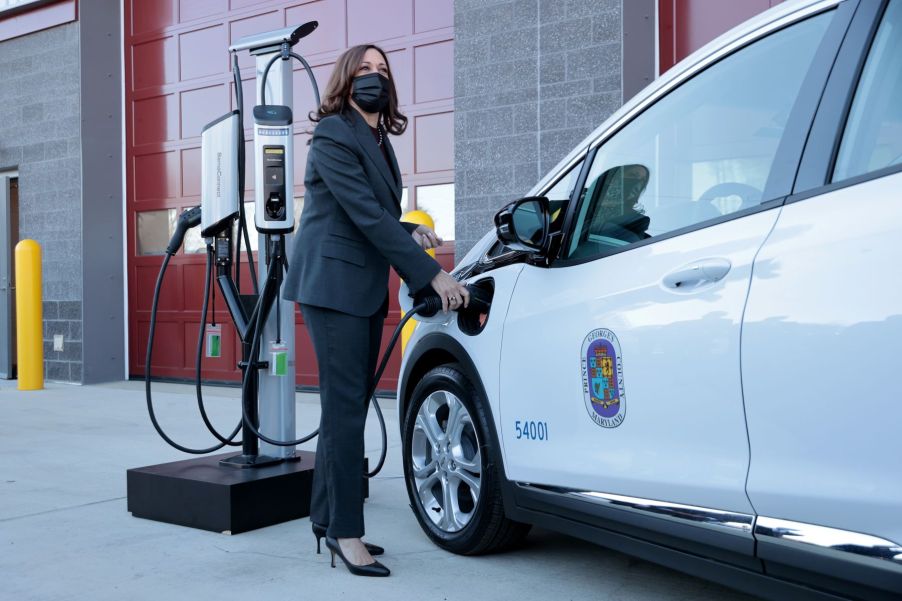
Kamala Harris Attacked for Struggling to Charge an EV: ‘She Can’t Even Put a Plug Into a Car!’
Earlier this month, host Sean Hannity showed a video of Vice President Kamala Harris on his Fox News show. The VP took a tour of the Brandywine Maintenance Facility in Prince George’s County, Maryland, where she was seen trying to charge an electric vehicle (EV). Harris was holding the plug with her hand as she would if she were putting gas in a combustion engine vehicle. So, why was Harris there, and what is the Biden-Harris Electric Vehicle Charging Action Plan?
A learning curve in charging EVs

In the show’s segment, Sean Hannity is joined by two other Fox News contributors in mocking Kamala Harris for not knowing how to charge an EV. In photos and video clips, a man at the facility is helping her and answering her questions. “There’s no sound or fume. How do I know it’s actually working?” Harris asks him at one point.
Jason Chaffetz went on to say Harris was “a joke” and “an embarrassment” in the segment that seemed more about mocking someone whose ideology doesn’t match theirs than actual politics. Leo Terrell added that Harris was selected as vice president solely based on her gender and skin color. He went on to say she had no expertise in foreign policy or criminal justice.
In truth, most Americans have never charged an electric vehicle before, much less owned or driven one. However, with the ambitious goal set by the Biden administration to transition to electric vehicles by 2030, a plan is needed to charge all those EVs nationwide. That plan is why Harris was there.
The Biden-Harris Electric Vehicle Charging Action Plan
In December, the Biden administration announced a multi-billion-dollar plan to boost the EV charging system in the U.S., according to NPR. The move to EVs is vital in reducing America’s carbon emissions. Additionally, having a solid infrastructure in place will encourage more consumers to buy them.
$7.5 billion was pledged by the White House in a bipartisan infrastructure law to build a national charging network. It includes provisions for new public chargers for local commuting and longer-distance driving. The announcement coincided with new commitments from GM, Lexus, and Volvo to expand their EV offerings.
As Harris reviewed the plan at the facility, she pointed out that knowing how to charge an EV is a barrier for many in considering one for their next vehicle. She explained that the plan would install public chargers in rural and urban areas along with suburban neighborhoods to make access easier.
President Biden hopes that more charging stations and proposed tax credits of up to $12,500 in his Build Back Better proposal will win Americans over to the side of environmentally friendly EVs. It’s also hoped that better accessibility will help with range anxiety.
Electric range anxiety for current and future EV drivers
According to J.D. Power, EV drivers experience range anxiety when the battery charge in their vehicle is low, and there are no available sources of electricity nearby. The driver becomes fearful of being stranded somewhere. Electric driving range and the current lack of charging infrastructure is one big reason people are reluctant to consider buying EVs.
Range anxiety can become an issue when plans change last minute. Maybe you forgot to get something you need at the store for a special occasion, but you didn’t fully charge your EV overnight. Depending on what you need and where you can get it, you may have to find an available charging station, charge up there, and then go about your business. Otherwise, you’ll have to do without the item or run the risk of going and not having enough charge to reach your destination.


